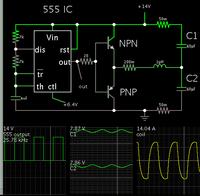william2016
Newbie level 5

Hi All
who can help me? i want to make a ultrasonic welding machine. and i meet two questions.
1: i haven't any circuit design information about 28KHz.
2: how to design a transducer apply for generater circuit and horn.
please help me.
who can help me? i want to make a ultrasonic welding machine. and i meet two questions.
1: i haven't any circuit design information about 28KHz.
2: how to design a transducer apply for generater circuit and horn.
please help me.


